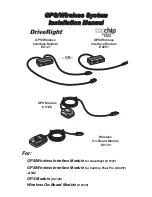
57
STEERING
10
FAULT DIAGNOSIS
VISUAL AND SAFETY CHECKS
WARNING: Before taking vehicle out on
the public highway for road test, it is
important that the following basic visual
checks are carried out to ensure that the vehicle
complies with legal requirements.
Tyres and wheel rims
1. Check and adjust tyre pressures
See WHEELS
AND TYRES, Repair, Tyre Pressures .
Note that this information refers to standard tyres
fitted as original equipment.
2. Check condition of tyres. Inspect for signs of
uneven wear, damage and feathering. Check
tread depth.
3. Ensure that the tyre make, type and general
condition are common across each axle.
4. Check wheel rims for signs of damage and
excessive run out.
5. Carry out road test
See Road Test Procedure
.
ROAD TEST PROCEDURE
General steering/handling problems can usually be
classified into one of the categories listed and ARE
GENERALLY RELATED TO THE AGE, CONDITION
AND USE OF THE VEHICLE.
WARNING: Ensure that all road tests are
conducted by suitably qualified drivers in
a safe and legal manner, and where local
traffic conditions allow.
1. Carry out visual and safety checks
See Visual
and Safety Checks .
Confirm general nature of complaint with customer,
simulating where possible the conditions under which
the problem occurs. Carry out following road test
procedure to establish the problem.
2. Steering load assessment - drive at 16 km/h (10
mph). Put 90
°
turn input into steering wheel,
check self centering. The self centering should
be equal on each lock but not necessarily return
to exactly straight ahead without assistance from
the driver.
3. Steering assessment - drive at 64 km/h (40 mph)
on a staight FLAT road (no camber), check for
steering veer. The vehicle should follow a
straight path with NO tendency to follow a
curved path. If vehicle veers towards the kerb,
vehicle may be ’camber sensitive’. A small
amount of veer in direction of camber is
acceptable.
4. Directional stability assessment - drive at 112
km/h (70 mph) or maximum legal speed on a
straight flat road. Carry out a normal lane
change. Vehicle should quickly settle into a new
straight path.
5. Braking assessment (medium effort) - drive at 96
km/h (60 mph) on a straight flat road. Apply
steady medium braking effort, noting any
tendency to veer. Carry out brake test three
times, if a veer is consistently noted carry out a
braking efficiency test on a rolling road.
6. Braking assessment (full effort) - drive at 96
km/h (60 mph) on a straight flat road. Apply full
braking effort, noting any tendency to veer. Carry
out brake test three times, if a veer is
consistently noted carry out a braking efficiency
test on a rolling road.
If the symptom described by the customer is stiff
steering or steering niggle, carry out stiff steering
procedure
See Stiff Steering Checklist .
If not, proceed with basic checks and adjustments
See Visual Check and Basic Adjustments .
Summary of Contents for DEFENDER 300Tdi
Page 310: ...76 CHASSIS AND BODY 2 DESCRIPTION AND OPERATION LAND ROVER 90...
Page 312: ...76 CHASSIS AND BODY 4 DESCRIPTION AND OPERATION LAND ROVER 110...
Page 314: ...76 CHASSIS AND BODY 6 DESCRIPTION AND OPERATION LAND ROVER 130...
Page 317: ...CHASSIS AND BODY 1 REPAIR DOORS RH rear door lock mechanism RH front door lock mechanism...
Page 415: ...86 ELECTRICAL 8 DESCRIPTION AND OPERATION...
















































